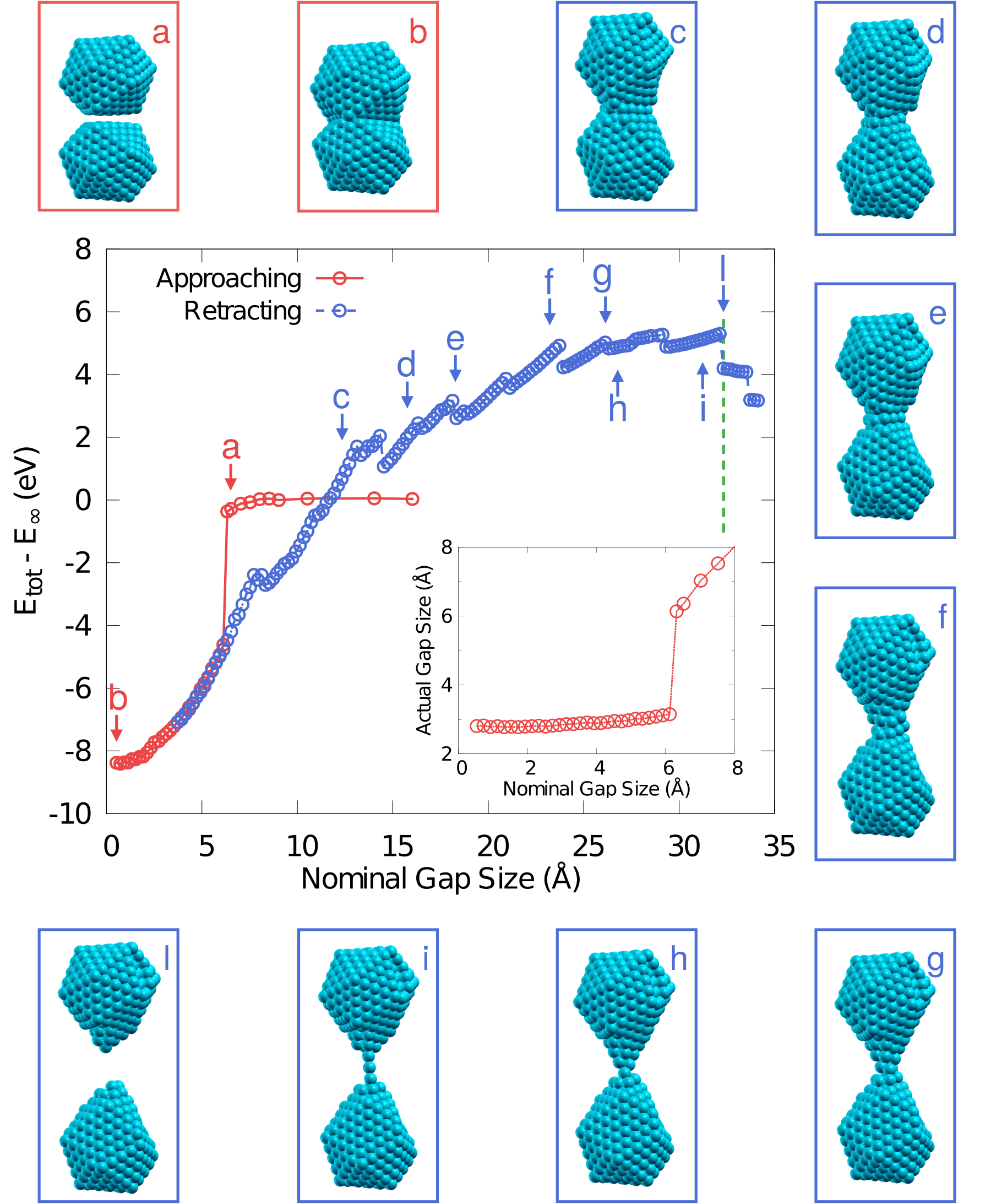Figure: Total energy of a plasmonic cavity formed by two Na380 clusters as a function of the nominal distance between them. Red circles represent the approaching process, while blue circles indicate the retracting process. The inner panel shows the actual gap size as a function of the nominal value during the approach. Images of the geometries around the graph show the rearrangement of the atoms in the clusters and the formation of a nanojunction during retraction.
Plasmonic Response of Metallic Nano-junctions Driven by Single
Atom Motion: Quantum Transport Revealed in Optics
Motivation:
Study the connection between transport and optics at the atomic scale, which is at the frontier of current optoelectronics and can drive new options in optical engineering of signals driven by the motion and manipulation of single atoms.
In such systems, collective electronic excitations at the surface of metallic nanostructures (surface plasmons) are central for the development and the high optimisation level of many techniques and processes, such as field-enhanced spectroscopy, thermo-therapy, photovoltaics, optical sensing, optical nano0engineering, optoelectronics or near-field microscopy.
This study aims to analyse the plasmonic behaviour of two metal nanoclusters pushed down to the realm of the atomic scale.
Achievements of the model:
The simulations performed showed that reorganisation at the atomic scale are fundamental to describe the optical properties of metallic nanojuctions. Events such as jump-to-contact and the following formation of metal nano-contact across the cavity are described with success. The former one can almost completely eliminate the plasmonic tunnelling regime while, the latter, characterised by sudden rearrangements of the atomic structure, affects the current flowing through the neck and so the optical response.
Model system/Software:
At the DFT level the simulations were performed using the SIESTA code while, the calculation of the optical properties were obtained using the TD-DFT, MBPT-LCAO.
The SIESTA simulations provided the following main information:
- Equilibrium structures for different cluster-to-cluster configuration
- Total energy of the system configurations
- Information of the geometrical neck cross-section of the system configurations
- Atomic forces on the lateral nanocluster surfaces



